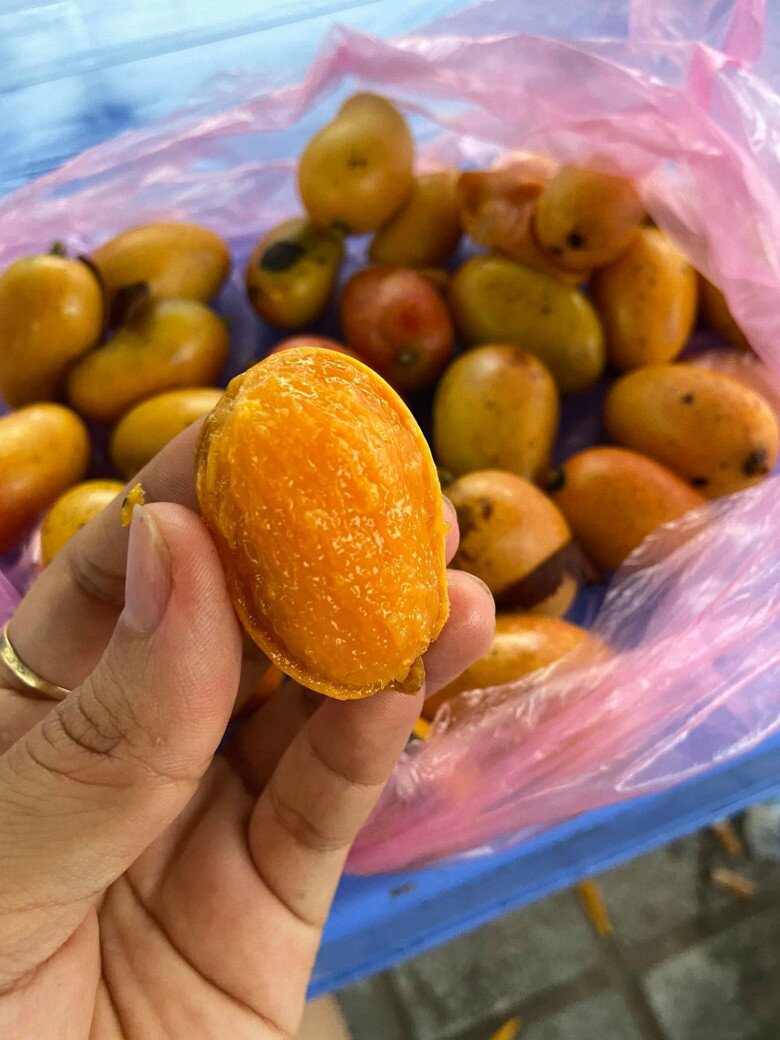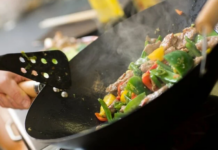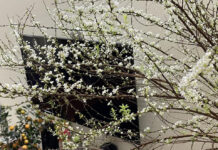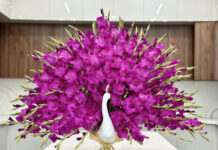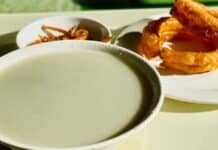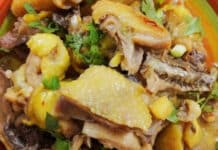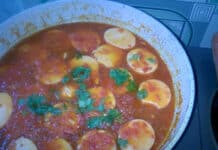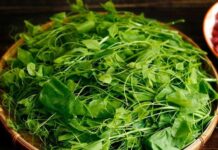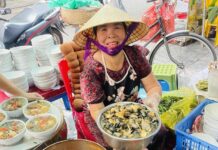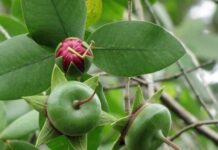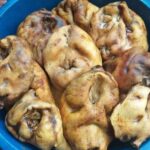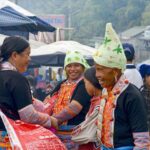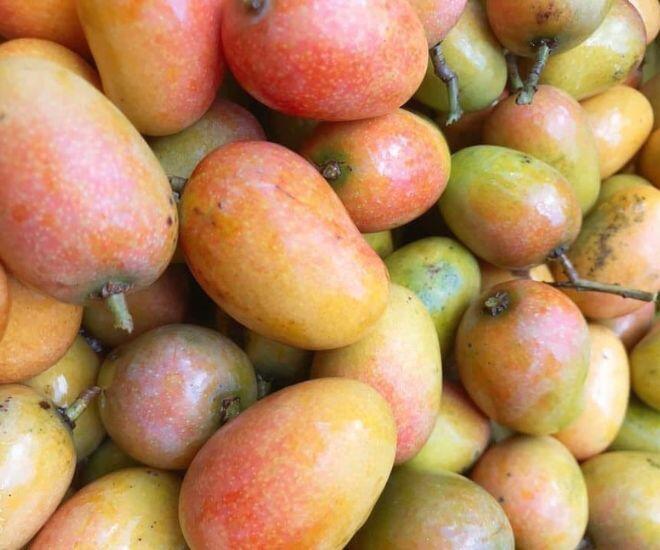
In the mountainous regions of Northwest Vietnam, such as Son La, Yen Bai, and Dien Bien, the Mangifera foetida Lour, locally known as “quéo,” thrives as a wild tree in the forests. This tree, belonging to the Anacardiaceae family, is closely related to mangoes and is predominantly found in Southeast Asian countries like Indonesia, Malaysia, Myanmar, Singapore, Thailand, and Vietnam. In Vietnam, the quéo fruit is celebrated as a local specialty deeply intertwined with the lives of the mountainous communities.
The quéo tree typically grows to a height of 15–20 meters, boasting a large trunk and a broad canopy. Its leaves are simple, alternate, and elongated with a glossy surface. The small, white flowers bloom in double clusters at the branch tips, with petals three times longer than the sepals. Flowering begins in late spring and continues into early summer. The tree bears fruit twice a year, during March–June and October–November.
At first glance, the quéo fruit resembles a small mango, about half its size. Often mistaken for the “thanh trà” fruit common in Central Vietnam, its distinct flavor sets it apart. When unripe, the fruit has a sour and astringent taste, perfect for sour soups or pickled with chili, salt, and chili powder, making it a beloved dish among the mountain people. When ripe, the skin turns a vibrant yellow, the flesh becomes thick and juicy, and the flavor transforms into a sweet, slightly tangy taste with a unique, delicate aroma unmatched by any other fruit.
Connoisseurs describe the quéo’s aroma as a blend of mango and thanh trà, both rich and refreshing. This unique flavor quickly captivates those who taste it, especially those who appreciate the wild, natural essence of forest fruits.
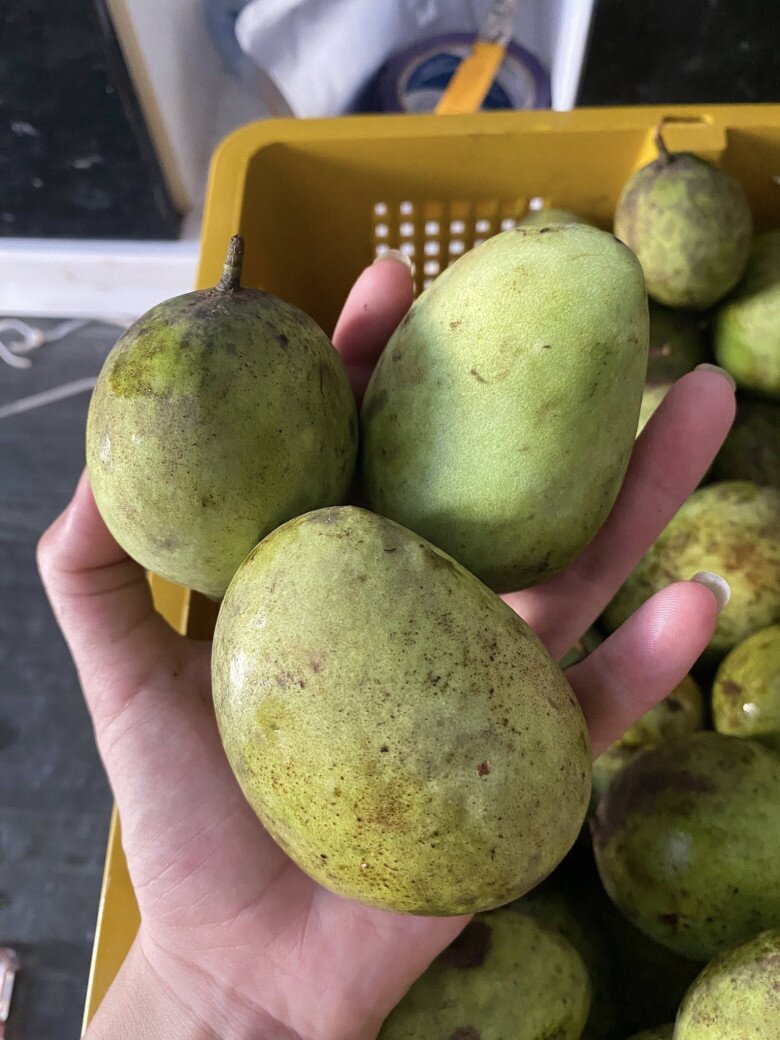
Once abundant on hillsides, along streams, and at forest edges, children could easily gather baskets of quéo fruits while playing outdoors. However, in recent years, deforestation for agricultural land has led to a decline in quéo trees. Locals now venture deep into the forests, climbing mountains and crossing streams to find the few remaining ancient trees.
These ancient quéo trees, tall and wide-branched, yield only a few dozen fruits per season. Unlike mangoes, quéo fruits grow sparsely on the branches, requiring a keen eye to spot. When unripe, the fruits are harvested for pickling with chili and sugar, sold to students and youth in the villages. Ripe fruits are carefully selected and transported to district and provincial markets, where they are prized as rare delicacies.
According to local traders, the demand for highland specialties in urban areas has surged in recent years, bringing once-obscure forest fruits like mắc khén, táo mèo, chanh rừng, and quéo into the spotlight. With its unique flavor, attractive appearance, and rarity, quéo has become a highly sought-after commodity.
While quéo sells for around 30,000–40,000 VND/kg in rural markets, prices can soar to 70,000–75,000 VND/kg in cities due to high transportation, preservation, and handling costs. Additionally, as quéo is primarily harvested from the wild rather than cultivated, its limited supply drives up demand. Many buyers pre-order through online channels to secure their purchase.
Some specialty stores market quéo as “Northwest forest mango,” packaging it in 1kg or 2kg bags for urban customers. Young city dwellers particularly enjoy its unique sweet-and-sour taste, using it in jams, juices, and salads.
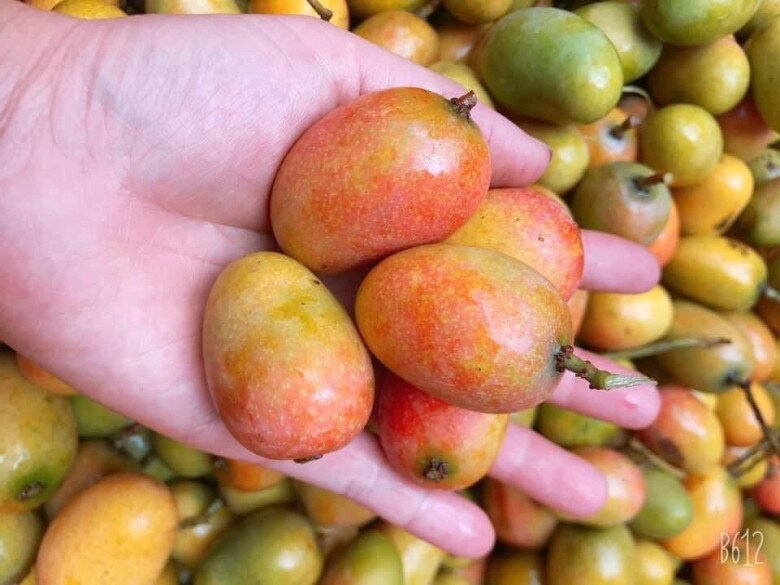
Beyond its culinary appeal, quéo is packed with nutrients. Studies show that 1,000g of quéo flesh contains 121–363.8mg of caroten, 13.2–80mg% of vitamin C, B vitamins, and organic acids like citric acid. It also contains natural gums, starch, and sugars that boost immunity, aid digestion, and enhance skin health.
Rich in vitamin C, quéo is valued for its ability to cool the body, detoxify, and strengthen the immune system. Mountain communities often use ripe quéo to make refreshing drinks during hot weather, providing both hydration and natural mineral replenishment.
The high prices quéo commands in urban markets highlight its untapped economic potential. While currently harvested from the wild, with proper research, breeding, and cultivation, quéo could become a lucrative specialty crop for highland farmers.
Agricultural experts note that quéo trees are well-suited to tropical climates, resistant to pests, and require minimal care. Preserving ancient quéo trees and preventing deforestation is crucial. Encouraging intercropping with other fruit trees can enhance biodiversity and economic value in mountainous regions.
